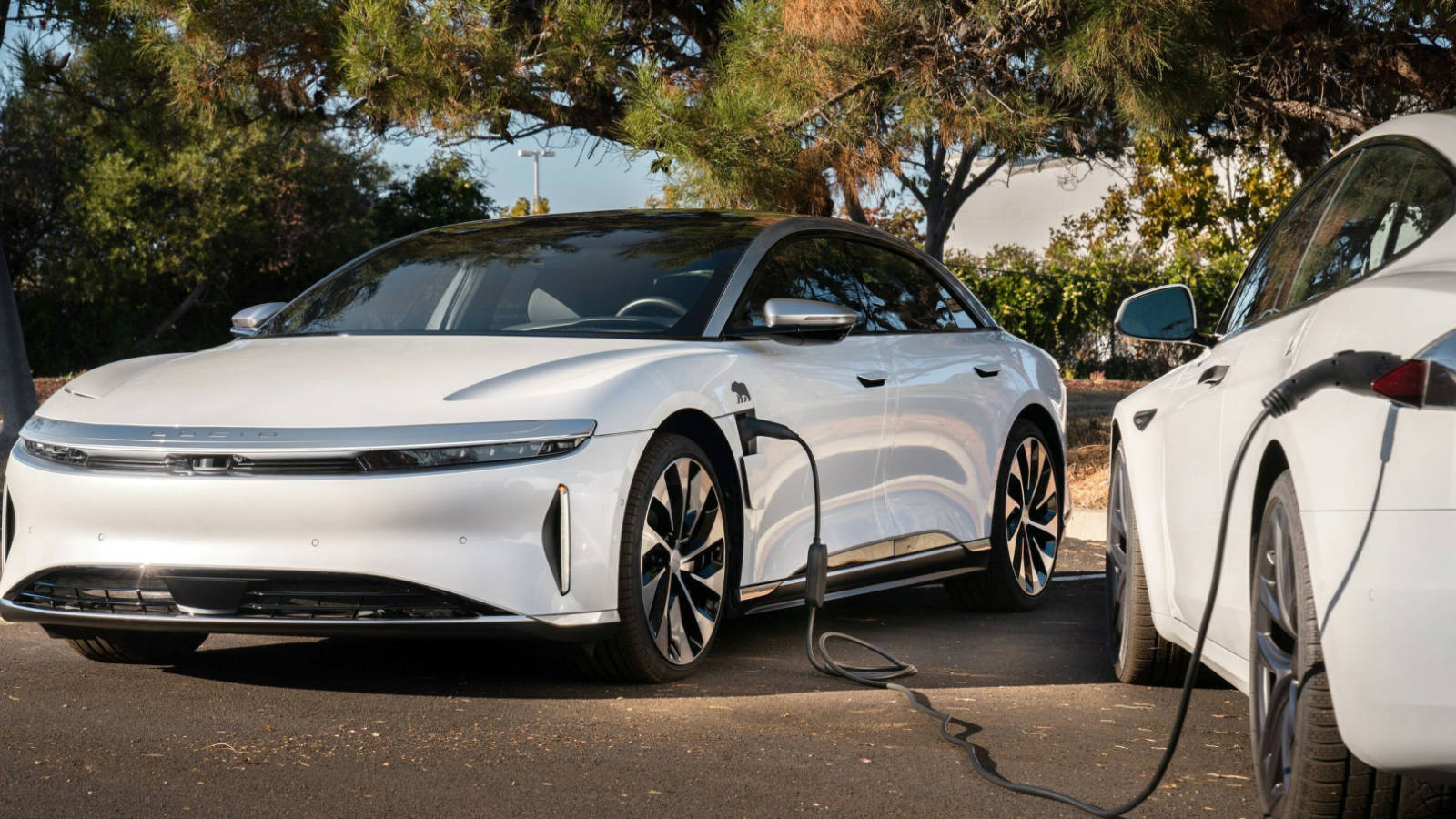A Detailed Guide To Automotive Terms — EV Battery & BMS

Electric vehicles (EVs) have become extremely popular in recent times. They are gradually becoming a reliable and sustainable alternative mobility to ICE vehicles. In this week’s guide to automotive terms, we will list some of the important questions asked about the EV battery and its BMS (Battery Management System).
What does an EV battery do?
In an electric vehicle (EV), the battery plays the crucial role of storing and supplying the electrical energy that powers the entire vehicle. It’s like the gas tank in a gasoline car, but instead of holding flammable liquid, it holds electricity in the form of chemical energy.
What are the different types of batteries in an EV?
Electric vehicles (EVs) typically use one or a combination of several types of batteries to store electrical energy for powering the vehicle. Here are some of the most common types:
Early Battery Types
- Lead-Acid Batteries: While less common in modern EVs, lead-acid batteries have been used historically, offering lower energy density and shorter lifespan compared to newer technologies like Li-ion.
- Nickel-Metal Hydride (NiMH) Batteries: Used in some early EVs and hybrids, NiMH batteries offer decent energy density and safety, though they’re less common now due to lower performance compared to Li-ion.
Present Battery Types

- Lithium-ion (Li-ion) Batteries: Widely used in EVs for their high energy density and long lifespan, Li-ion batteries come in various chemistries like NMC and LFP, offering a balance between performance and safety.
- Lithium Iron Phosphate (LiFePO4) Batteries: Known for their safety and stability, LiFePO4 batteries provide longevity and resistance to thermal runaway, making them a reliable choice for EVs despite slightly lower energy density.
Next-Gen Battery Types
- Solid-State Batteries: Representing the next-gen battery tech, solid-state batteries promise higher energy density, faster charging, and improved safety by using solid electrolytes, but are still in the development phase for commercial use in EVs.
- Sodium-ion Batteries: Still in R&D, sodium-ion batteries utilize sodium ions for energy storage, potentially offering advantages like lower cost and abundant raw materials compared to lithium-ion batteries.
- Graphene Batteries: Emerging as a promising technology, graphene-based batteries utilize graphene to improve performance, offering higher energy density, faster charging, and longer lifespan compared to traditional Li-ion batteries.
What is a battery pack?
A battery pack in an EV consists of multiple individual battery cells organized and connected together to provide the necessary voltage and energy capacity to power the vehicle. Read this linked article to know how to increase the lifespan of an EV battery.
How a battery pack is kept cool?
Battery packs in EVs are typically cooled using liquid cooling or air cooling systems to maintain optimal operating temperatures and prevent overheating, which can degrade battery performance and lifespan.
What are the risks involved with a battery in an EV?
- Fire: Though rare, damage or manufacturing defects can lead to battery fires. Modern EVs have safety features to mitigate this risk.
- Degradation: Batteries lose capacity over time, reducing the EV’s range. Proper charging habits and maintaining moderate temperatures can slow down this process.
Here is a detailed comparison of EV vs ICE cars involved in a crash.
How does a battery charge in an EV?
- AC Charging: Involves using an alternating current power source to charge the battery, typically through a charging station or home charging unit. (Level 1 and Level 2 Charging Speeds).
- DC Charging: Direct current charging, usually faster than AC charging, often available at public charging stations (Level 3 Charging Speeds).
- Regenerative Charging: Captures energy during braking or coasting and converts it back into electrical energy to recharge the battery.
What are different EV battery charging levels?

Level 1 Charging:
- Uses a standard 120-volt household outlet.
- Charges at a rate of 1.4-2.0 kW, adding about 2-5 miles of range per hour.
- Very slow, best suited for overnight charging or topping off the battery.
- Often comes with the car as a portable charger.
Level 2 Charging:
- Uses a 240-volt outlet, like the one for an electric dryer.
- Charges at a rate of 6-19.2 kW, adding about 10-20 miles of range per hour.
- Faster than Level 1, good for home or workplace charging.
- Requires installation of a charging station.
Level 3 Charging (DC Fast Charging):
- Uses direct current (DC) instead of alternating current (AC).
- Charges at a rate of 50-350 kW, adding about 60-200 miles of range in 30 minutes.
- Fastest option, ideal for long trips or public charging.
- More expensive than Level 1 and 2, and not as widely available.
- Not all EVs are compatible with DC fast charging.
Read this linked article for tips to extract maximum range from your EV.
How are battery connected to the electric motor?
The battery pack connects to the electric motor through high-voltage cables and an inverter. The inverter converts the battery’s direct current (DC) into alternating current (AC) needed by the motor.
What is a Power Control Unit in an EV?
A power control unit regulates the flow of electricity from the battery to the motor, controlling the vehicle’s speed and performance.
What is 400-volt and 800-volt architecture?
- 400-volt: Widely used, offering a balance between cost, performance, and charging speed.
- 800-volt: Emerging technology, allowing for even faster charging and potentially longer ranges, but with higher system complexity and cost.
What is Vehicle-2-Load and Vehicle-2-Vehicle?

- Vehicle-2-Load (V2L): refers to the capability to supply electrical power to external devices or the grid, to power appliances or even homes.
- Vehicle-2-Vehicle (V2V): enables charging another EV using your own vehicle’s battery, helpful in stranded situations.
How are EV batteries recycled?
EV batteries are recycled through processes that involve dismantling, shredding, and separating their components (such as metals and electrolytes). The recovered materials can be reused in new batteries or other applications.
What is the difference between main and auxiliary batteries in an EV?
The main battery in an EV powers the vehicle’s propulsion system, while auxiliary batteries are smaller batteries used for ancillary functions such as powering lights, infotainment systems, and auxiliary systems.
What is a battery management system?
A battery management system (BMS) is a crucial component in EVs that monitors and controls various aspects of the battery, including temperature, voltage, and state of charge, to optimize performance, safety, and lifespan.
How does BMS work?
- Monitors cell voltage, temperature, current, and overall health.
- Ensures all cells in the pack charge and discharge evenly, maximizing lifespan.
- Controls charging and discharging rates, preventing overload and ensuring safety.
- Communicates with the vehicle’s onboard systems, providing data on battery status and performance.
What is the (SoC) State of Charge in a battery?

The State of Charge (SoC) in a battery refers to the current level of stored electrical energy relative to the battery’s maximum capacity. 0% indicates a fully discharged battery and 100% represents a fully charged battery.
What are the different battery combinations in a battery pack?
Battery packs in electric vehicles (EVs) use different combinations of individual battery cells to meet power and energy requirements:
- Series Configuration: Cells connected end-to-end to increase voltage.
- Parallel Configuration: Cells connected side-by-side to increase capacity.
- Series-Parallel Combination: Groups of cells connected in both series and parallel for a balance of voltage and capacity.
- Module Configuration: Battery pack composed of multiple modules, each containing series or parallel arrangements of cells.
Those are all the important terminologies involved in an EV battery and BMS. We will be explaining other sections of an electric car in the coming weeks in our weekly guide to automotive terms.
Keep an eye on the DubiCars Blog section for more such guides. Also, if you are new to the Automotive Terminologies guide, we recommend giving the beginner’s guide a read.
Find used electric cars for sale in the UAE and new electric cars for sale in the UAE.
Also Read:
- Top 10 EV Cars Of All Time
- Top 10 Electric Cars In The UAE
- Past, Present & Future Of Electric Vehicles








